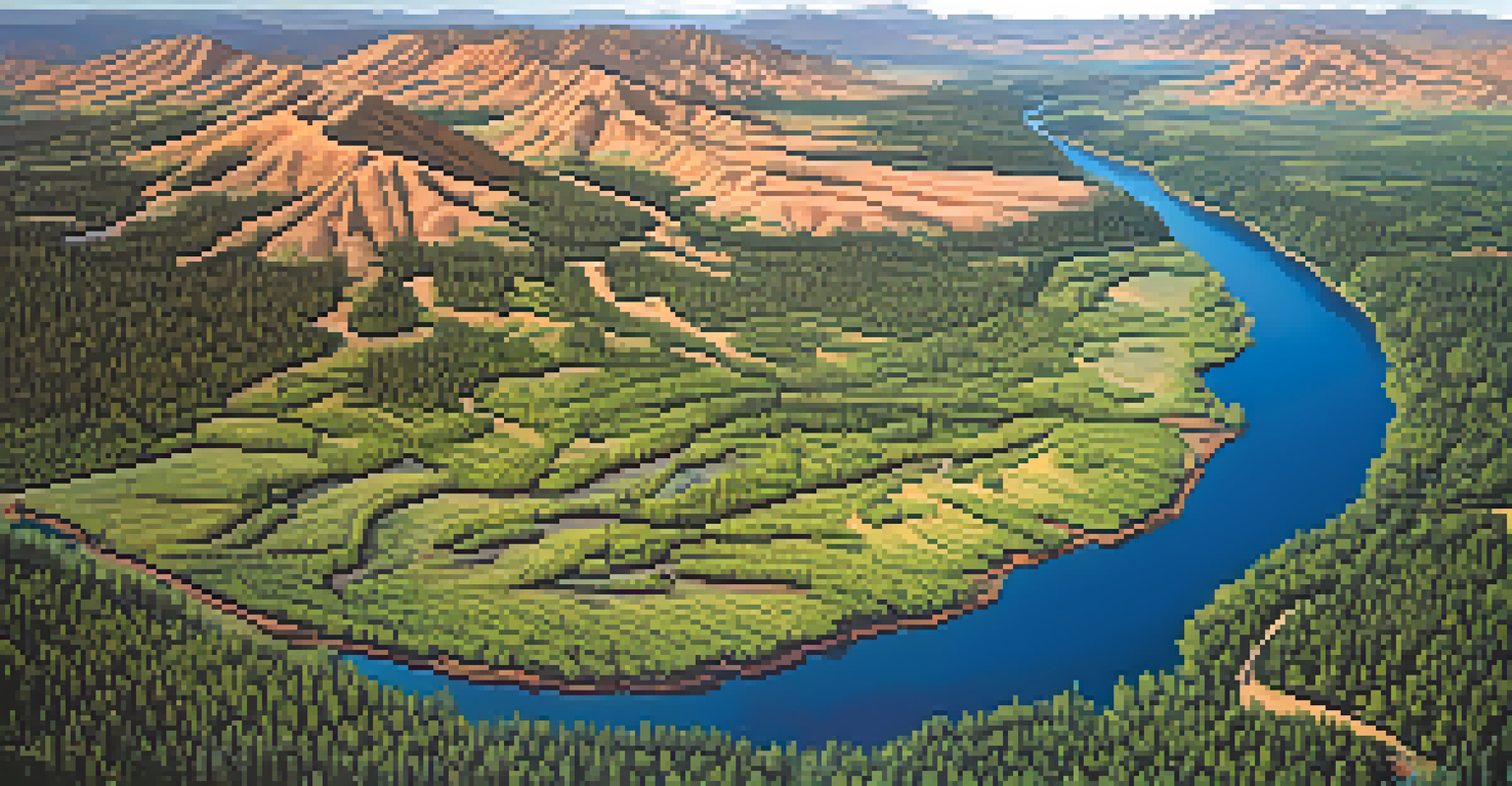Oregon's Forest Management: Balancing Ecology and Recreation

Understanding Oregon's Forest Ecosystem and Its Importance
Oregon is home to a diverse range of forest ecosystems, from lush coastal rainforests to arid high desert woodlands. These forests play a crucial role in maintaining biodiversity, providing habitat for countless species and serving as carbon sinks that combat climate change. They also offer recreational opportunities that attract millions of visitors each year, making forest management a key focus for sustainability.
The forest is not a resource for us, it is life itself. It is the only place we all live.
The state's forests are not just ecological treasures; they also support a robust economy through timber production, tourism, and outdoor recreation. Balancing these economic interests with environmental stewardship is a challenge that requires thoughtful management practices. By understanding the interconnectedness of these elements, we can better appreciate the importance of sustainable forest management.
Moreover, the forests of Oregon contribute significantly to the quality of life for its residents, offering spaces for hiking, camping, and other outdoor activities. As we delve deeper into Oregon's forest management practices, it becomes clear that maintaining this balance is essential for the health of both the environment and the community.
The Role of Forest Management in Ecological Health
Effective forest management focuses on promoting ecological health by ensuring that forest ecosystems remain resilient. This involves practices like controlled burns, selective logging, and reforestation, which can help prevent wildfires, disease, and invasive species. These methods are not only beneficial for the environment but also for the recreational activities that rely on healthy forests.

For instance, controlled burns mimic natural fire cycles, clearing out underbrush and allowing larger trees to thrive. This practice can greatly reduce the risk of catastrophic wildfires, which can devastate both wildlife habitats and recreational areas. By managing forests proactively, we protect the ecological integrity that sustains these environments.
Oregon's Forests Support Biodiversity
Oregon's diverse forest ecosystems are vital for maintaining biodiversity, providing habitat for wildlife, and acting as carbon sinks.
Moreover, healthy forests contribute to clean air and water, which are vital for both wildlife and human populations. When forest management prioritizes ecological health, it creates a win-win situation where nature thrives and recreation remains accessible for everyone.
Recreational Opportunities in Oregon's Forests
Oregon's forests are a playground for outdoor enthusiasts, offering activities ranging from hiking and mountain biking to fishing and camping. The state's diverse landscapes mean that there's something for everyone, whether you're seeking the thrill of a challenging trail or the tranquility of a quiet lakeside. This recreational aspect is a significant draw for tourists and locals alike.
In every walk with nature one receives far more than he seeks.
However, with the increasing popularity of outdoor activities, there comes a responsibility to protect these natural spaces. Forest management practices are crucial in ensuring that recreational use does not lead to environmental degradation. By implementing measures such as designated trails and camping zones, managers can minimize human impact while still allowing people to enjoy the beauty of Oregon's forests.
Additionally, educational programs and community involvement play a vital role in promoting responsible recreation. When visitors understand the importance of preserving these ecosystems, they are more likely to engage in practices that protect the forests, ensuring that they can be enjoyed for generations to come.
Challenges Facing Oregon's Forest Management
Oregon's forest management is not without its challenges. Climate change poses significant risks, leading to more frequent wildfires, pest outbreaks, and changes in forest composition. These issues complicate the task of maintaining healthy ecosystems while providing recreational opportunities and economic benefits.
Moreover, there are competing interests at play, such as logging companies, conservation groups, and recreational users. Each group has its own priorities, and finding common ground can be difficult. Effective forest management must navigate these complex dynamics while keeping ecological health at the forefront.
Balancing Economy and Ecology
Effective forest management in Oregon requires balancing economic interests, such as timber production and tourism, with ecological health.
In response to these challenges, Oregon has implemented collaborative approaches that involve stakeholders from various sectors. By fostering dialogue and cooperation, the state aims to develop comprehensive strategies that address the diverse needs of its forests and the people who rely on them.
Innovative Approaches to Sustainable Forest Management
To tackle the challenges of forest management, Oregon is embracing innovative practices that prioritize sustainability. Techniques such as agroforestry and selective logging are being explored to enhance both ecological health and economic viability. These methods allow for the production of timber while preserving the integrity of the forest ecosystem.
Additionally, integrating technology into forest management has proven beneficial. For example, using drones for aerial surveys helps monitor forest health and detect changes more efficiently. This data-driven approach enables managers to make informed decisions that align with both ecological and recreational goals.
Furthermore, community involvement in forest management is gaining traction. Programs that engage local residents in conservation efforts not only build awareness but also foster a sense of stewardship. When people feel a connection to the land, they are more likely to support sustainable practices that benefit everyone.
The Importance of Education and Community Engagement
Education plays a pivotal role in fostering a culture of conservation in Oregon's forests. By informing the public about the importance of forest ecosystems, we can inspire individuals to take actionable steps towards sustainability. Workshops, school programs, and community events help raise awareness about responsible recreation and forest stewardship.
Moreover, collaborative projects between local communities and forest managers can yield positive outcomes. When communities are engaged in decision-making processes, they contribute valuable insights that can enhance forest management strategies. This partnership not only empowers residents but also strengthens the bond between people and nature.
Community Engagement is Essential
Education and community involvement are crucial for fostering a culture of conservation and ensuring sustainable practices in Oregon's forests.
In essence, education and community engagement create a ripple effect, encouraging more people to participate in preserving Oregon's forests. As awareness grows, so does the collective effort to ensure that these natural treasures remain healthy and accessible for future generations.
Looking Ahead: The Future of Oregon's Forests
As we look to the future, the importance of sustainable forest management in Oregon cannot be overstated. With ongoing challenges such as climate change and increasing recreational pressures, proactive strategies will be essential in preserving these vital ecosystems. Continuous adaptation and innovation will be key to navigating the complexities of forest management.
Collaboration between stakeholders, including government agencies, environmental organizations, and local communities, will play a crucial role in shaping the future of Oregon's forests. By working together, these groups can develop strategies that balance ecological health with recreational opportunities, ensuring that both can thrive.

Ultimately, the future of Oregon's forests hinges on our collective commitment to sustainability. By prioritizing responsible management practices and fostering a culture of conservation, we can create a legacy that honors the beauty and significance of these natural landscapes for generations to come.